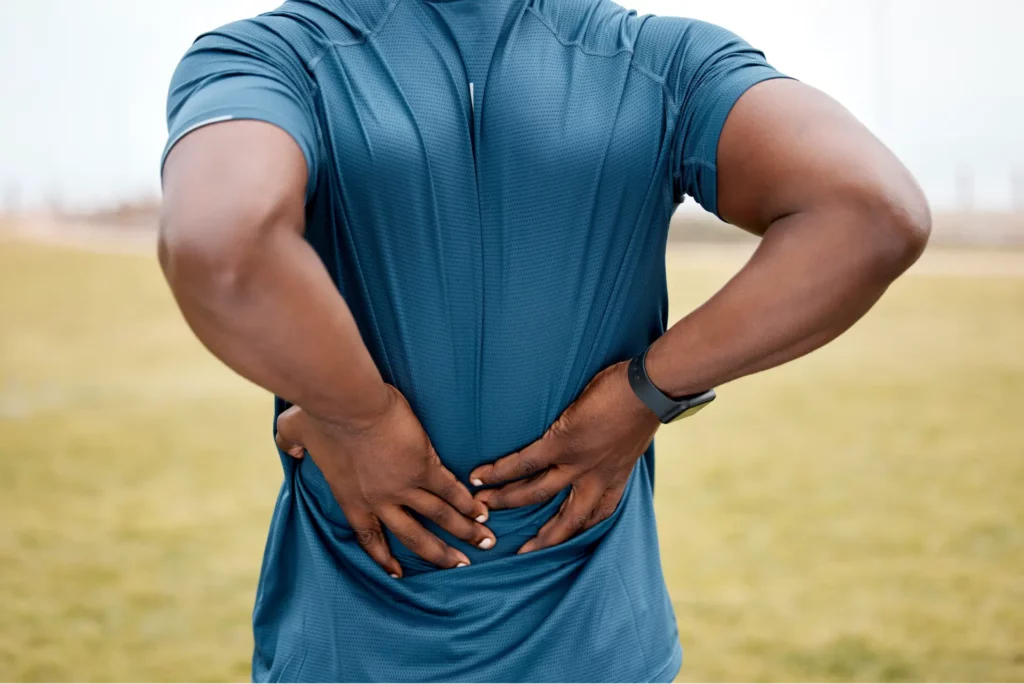Lower Back Pain
Lower back pain treatment in South Bristol
At the Bristol Back Pain Clinic, our chiropractors and osteopaths are experts in assessing, diagnosing and treating back pain.

Focus on back pain
Harry Kauntze, chiropractor at the Bristol Back Pain Clinic explains how we can help: “We are experienced in finding the cause of back pain and treating it effectively with a range of techniques designed to provide pain relief and restore normal function. Osteopathic and chiropractic treatment for back pain include joint mobilisations or adjustments, stretching and massage techniques, nutritional advice, relaxation techniques, home stretches and exercises. If required we can also order MRI and Xrays to assist diagnosis.”
Types of back pain
Back pain is the second most common reason for visiting a GP, and – as our name suggests – is one of the most common problems we help our patients with at the clinic. The majority of people suffering with back pain experience what is known as ‘mechanical’ back pain. This type of back pain can involve the muscles, joints and ligaments and is not caused by any serious underlying condition, more as a result of bad posture, sitting at a desk all day, or even due to tense muscles caused by emotional stress.
Back pain can also be caused by wear and tear as we get older and the discs in our backs deteriorate with age. This type of back pain is characterised by stiffness, pain and difficulty moving.
Treatment for back pain
Pain that has been going on for 3 or more months is termed chronic and it becomes more difficult to resolve the longer you leave it. Early treatment of back pain will help you get better faster and NICE (GP guidelines) recommend a course of manual therapy including spinal manipulation, mobilisation or soft tissue techniques such as massage as part of a treatment package to manage lower back pain and sciatica.
Harry Kauntze, chiropractor at The Bristol Back Pain Clinic explains how treatment can help: “Identifying the cause of pain and giving our patients a clear understanding of the problem and how we can treat it are the first steps to recovery. Once we know what the problem is, we can use a range of effective treatments for lasting improvement. These include acupuncture, joint mobilisations or adjustments, stretching and massage techniques, nutritional advice, relaxation techniques, home stretches and exercises.”
See why patients love Bristol Back Pain Clinic
“I had made the same-day appointment with Marion after a niggle in my lower back became pain that was stopping me getting on with my day. Marion was knowledgeable, reassuring and friendly, she explained what was happening and what she was doing and I always felt comfortable and in good hands. I had another two follow up appointments and was pain free pretty quickly thanks to her treatment and useful advice.”
“Excellent service. Proven results. I have suffered with postural back pain issues for years. The BBPC was recommended to me by a friend and I’m glad I visited. After discussing my problems, a treatment plan was agreed and I had immediate relief after the first visit. After only a short number of weeks, I am now almost completely pain free.”
“Really professional team and gave me some great advice as well as helping sort an ongoing lower back issue that I have as I do a lot of driving for work. Would recommend them to anyone.”
“I had been suffering with lower back pain for years, some days moving and bending were almost impossible. After an extremely painful weekend I got in touch with the Bristol Back Pain Clinic. Let’s just say I shuffled into my first appointment and walked out like a new man. Extremely professional and extremely knowledgeable. I would recommend to anyone.”
“I first attended the back pain clinic about 10 years ago for an acute back problem. Harry was kind, considerate and professional. He was able to help me with the issue and returned me full fitness. Since then I have booked in whenever I feel a niggle and he supports me to nip an issues in the bud. I have no hesitation in recommending the back pain clinic and have done to many friends already. They are the best!”